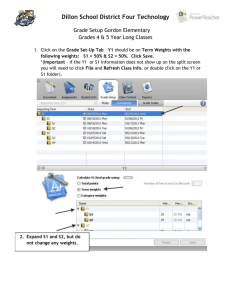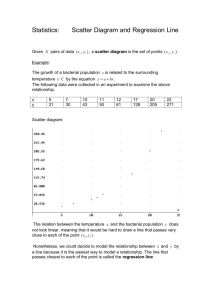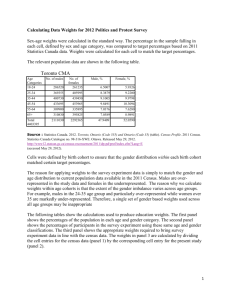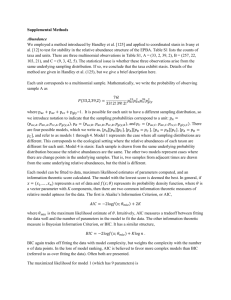Physics 4AL Lab 0
advertisement
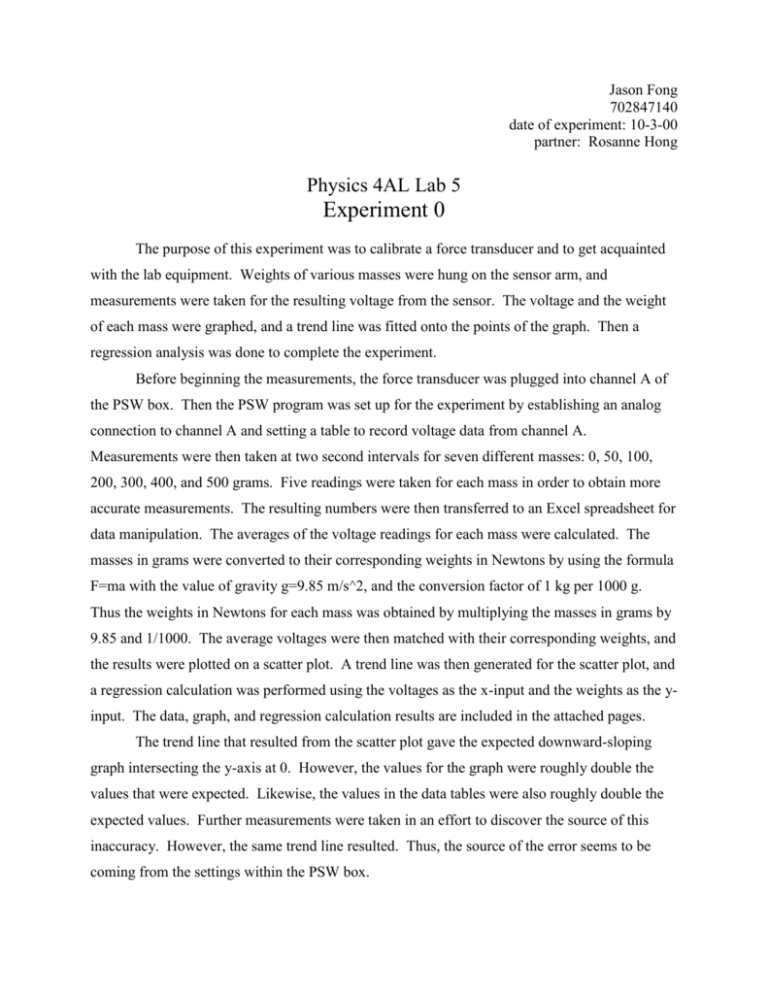
Jason Fong 702847140 date of experiment: 10-3-00 partner: Rosanne Hong Physics 4AL Lab 5 Experiment 0 The purpose of this experiment was to calibrate a force transducer and to get acquainted with the lab equipment. Weights of various masses were hung on the sensor arm, and measurements were taken for the resulting voltage from the sensor. The voltage and the weight of each mass were graphed, and a trend line was fitted onto the points of the graph. Then a regression analysis was done to complete the experiment. Before beginning the measurements, the force transducer was plugged into channel A of the PSW box. Then the PSW program was set up for the experiment by establishing an analog connection to channel A and setting a table to record voltage data from channel A. Measurements were then taken at two second intervals for seven different masses: 0, 50, 100, 200, 300, 400, and 500 grams. Five readings were taken for each mass in order to obtain more accurate measurements. The resulting numbers were then transferred to an Excel spreadsheet for data manipulation. The averages of the voltage readings for each mass were calculated. The masses in grams were converted to their corresponding weights in Newtons by using the formula F=ma with the value of gravity g=9.85 m/s^2, and the conversion factor of 1 kg per 1000 g. Thus the weights in Newtons for each mass was obtained by multiplying the masses in grams by 9.85 and 1/1000. The average voltages were then matched with their corresponding weights, and the results were plotted on a scatter plot. A trend line was then generated for the scatter plot, and a regression calculation was performed using the voltages as the x-input and the weights as the yinput. The data, graph, and regression calculation results are included in the attached pages. The trend line that resulted from the scatter plot gave the expected downward-sloping graph intersecting the y-axis at 0. However, the values for the graph were roughly double the values that were expected. Likewise, the values in the data tables were also roughly double the expected values. Further measurements were taken in an effort to discover the source of this inaccuracy. However, the same trend line resulted. Thus, the source of the error seems to be coming from the settings within the PSW box.




